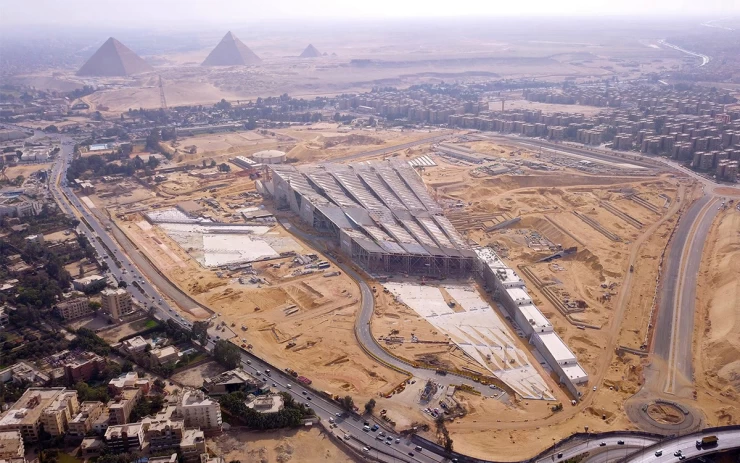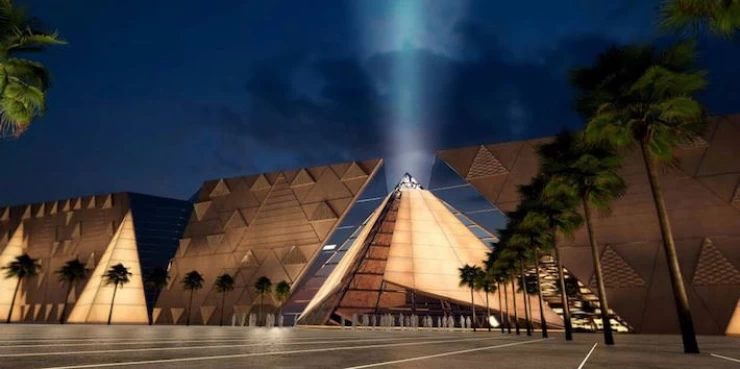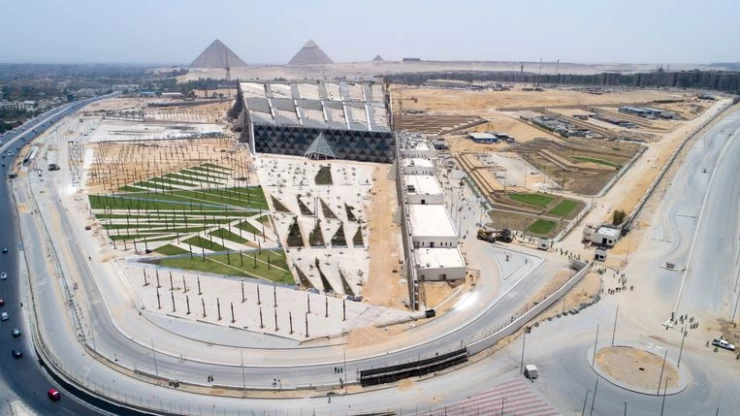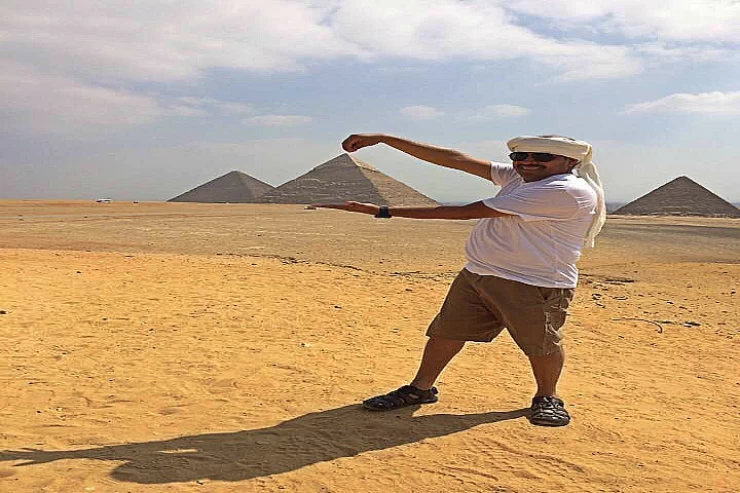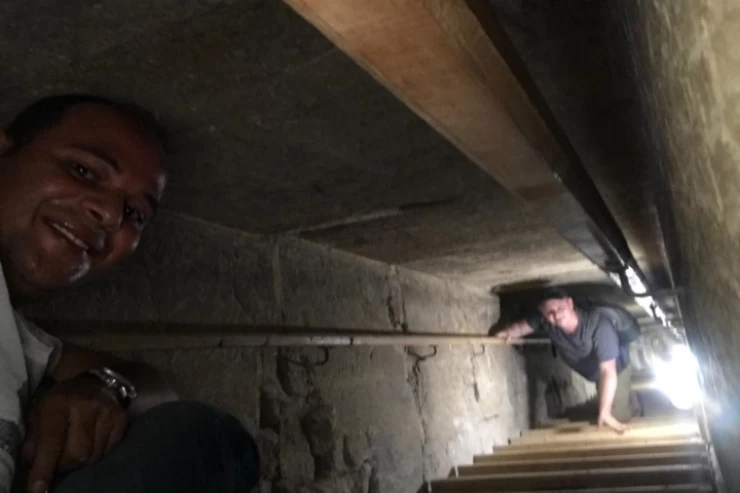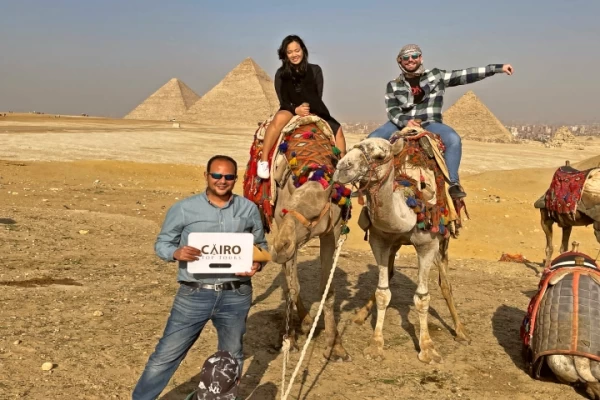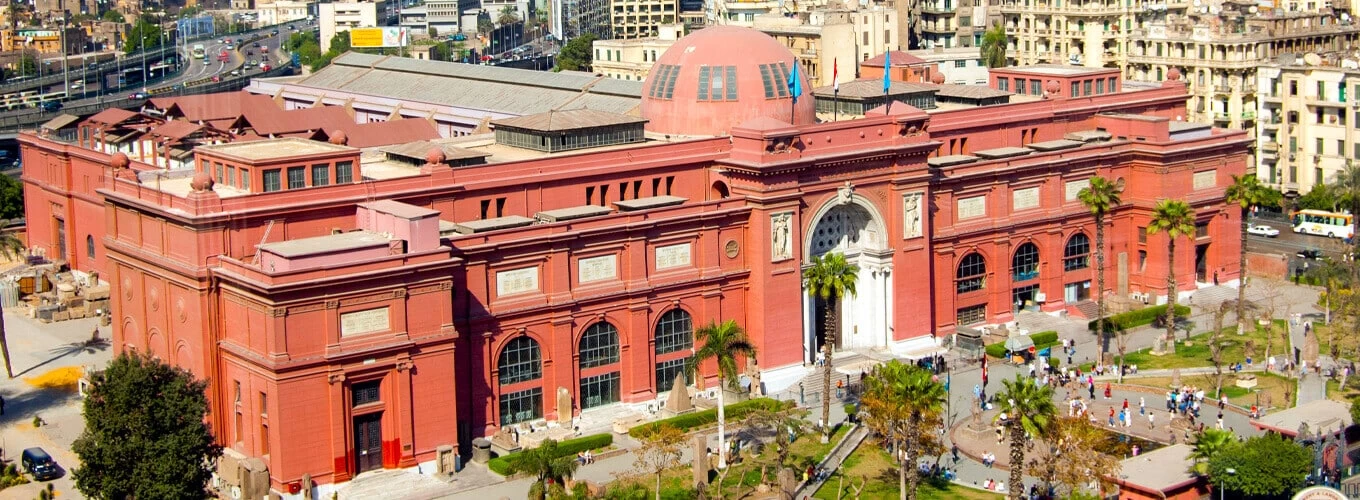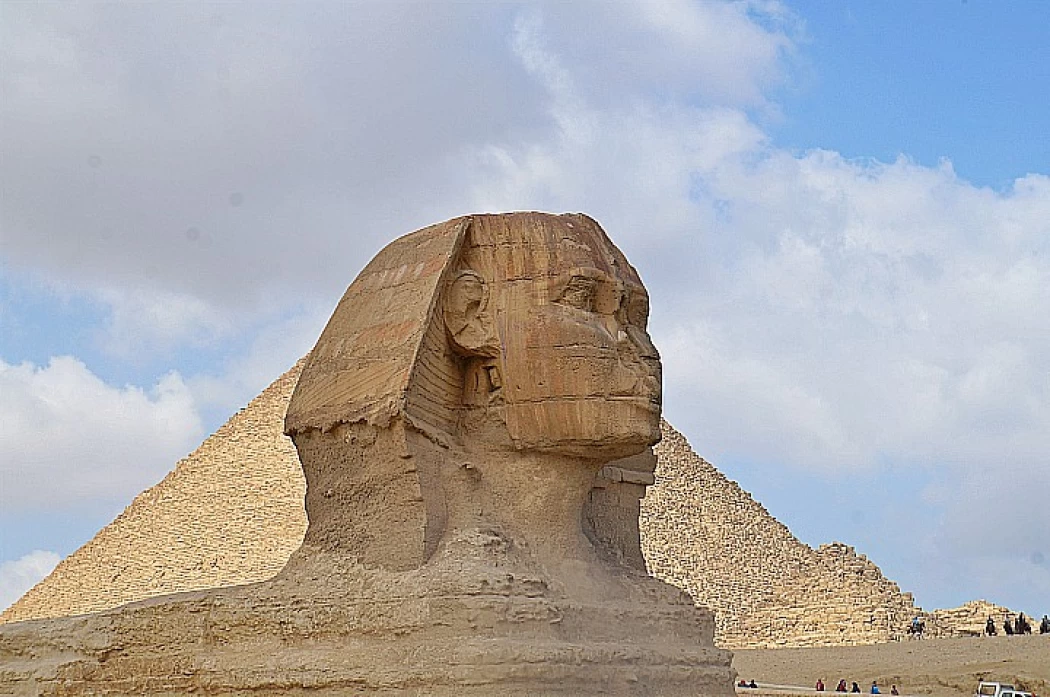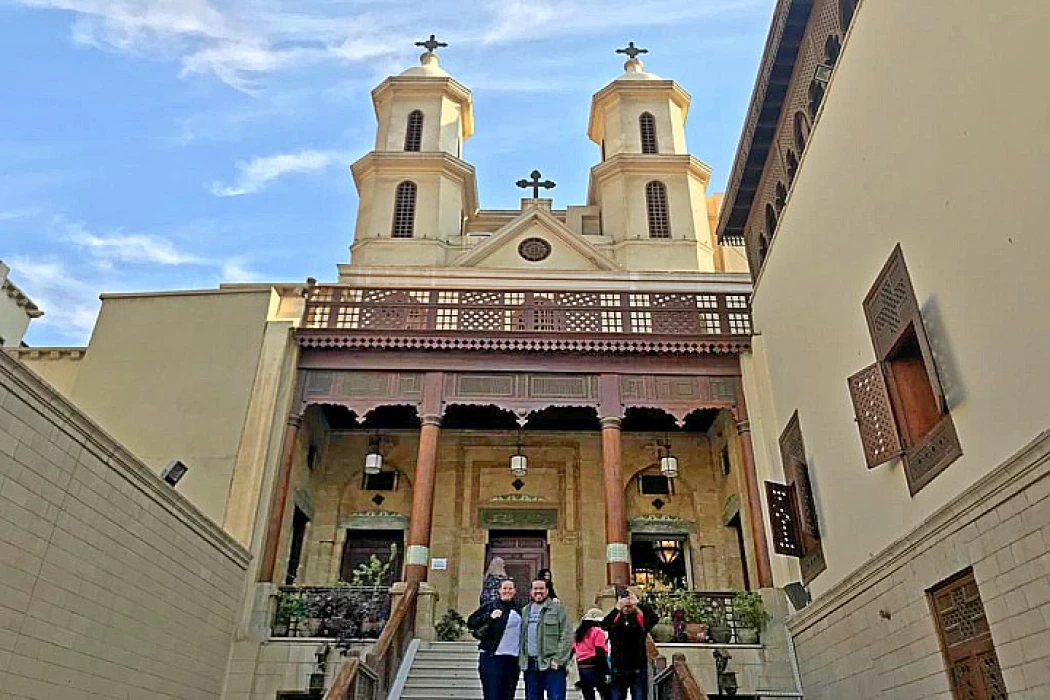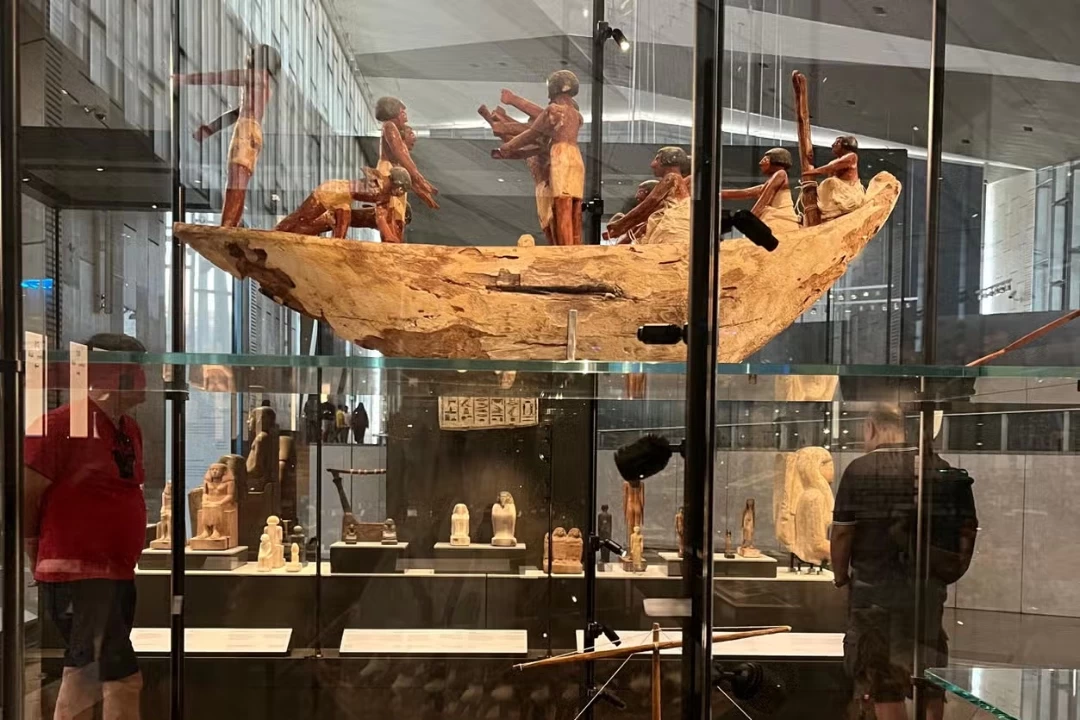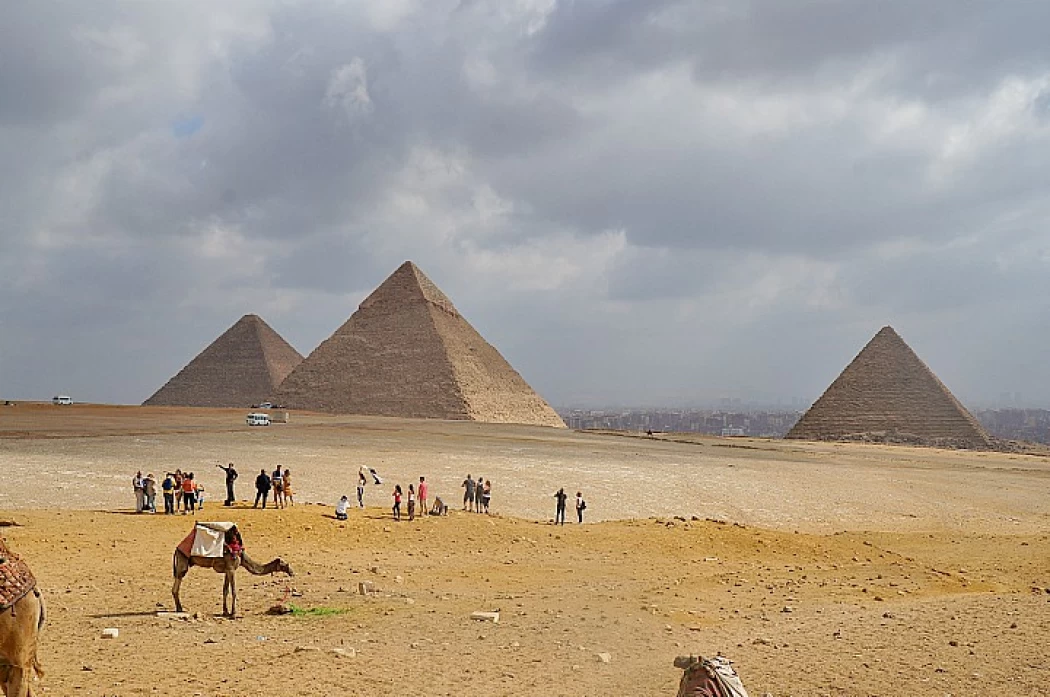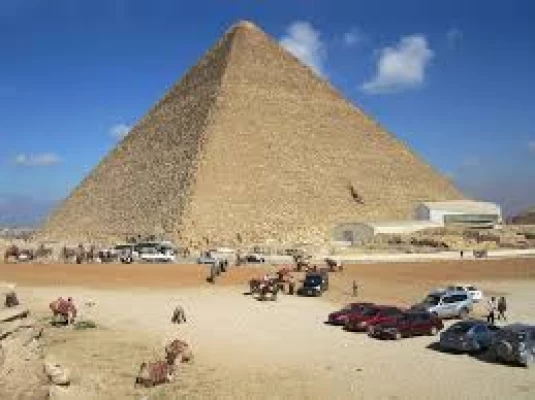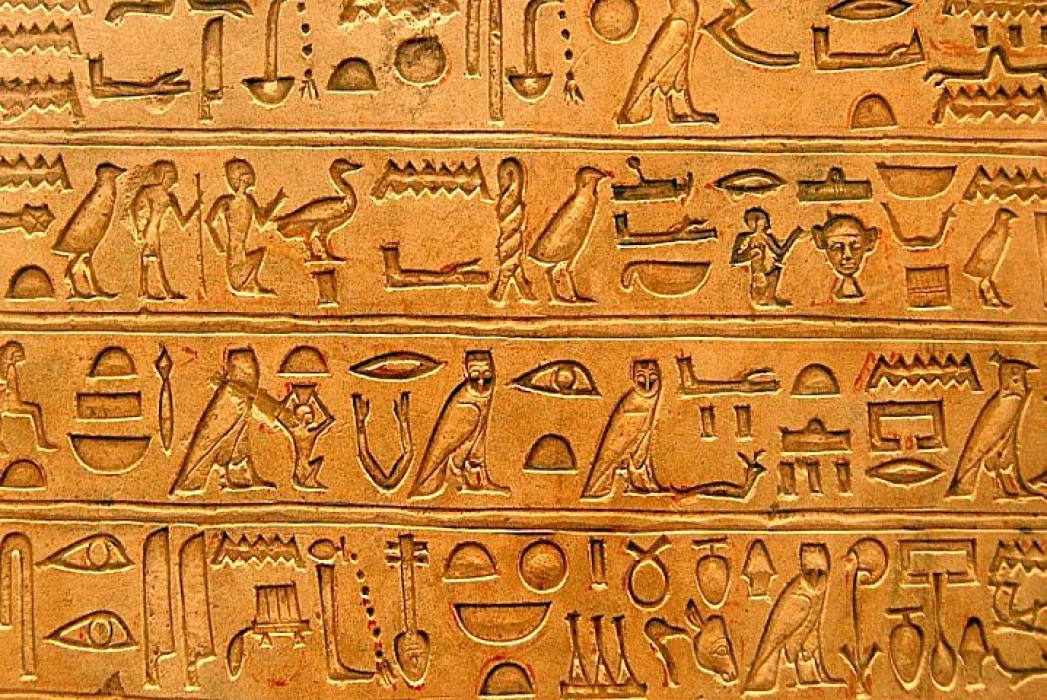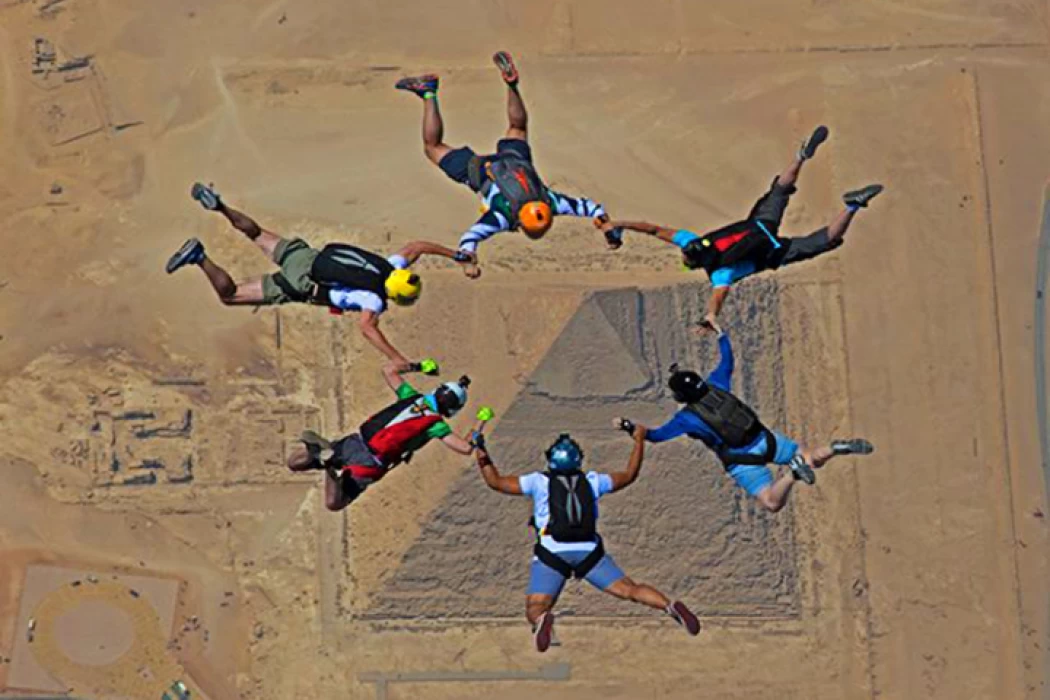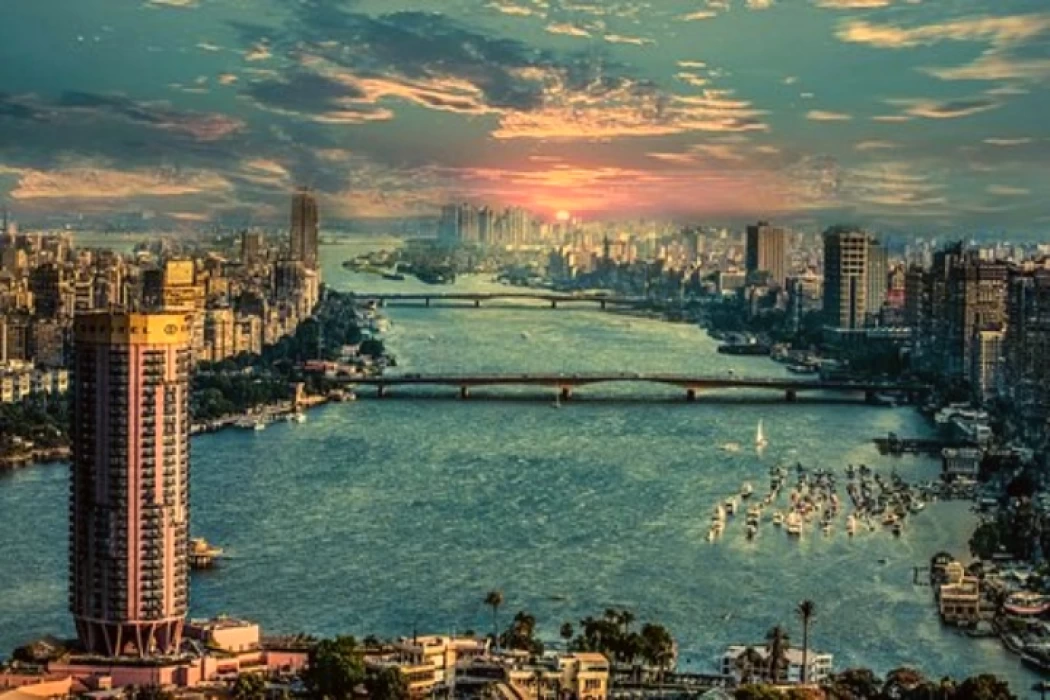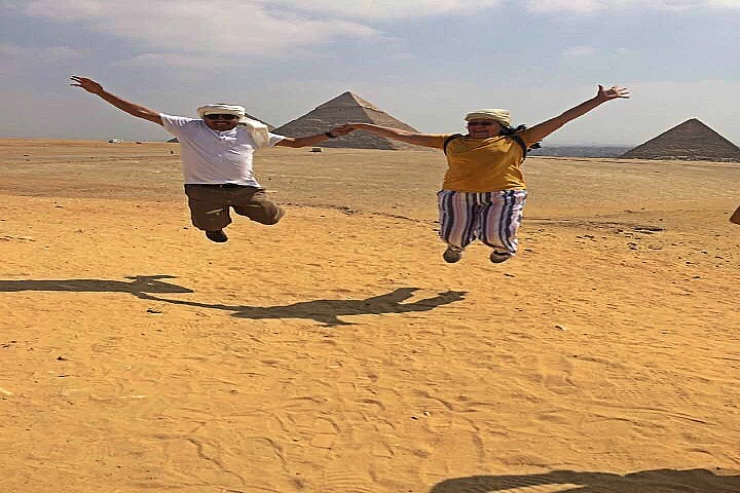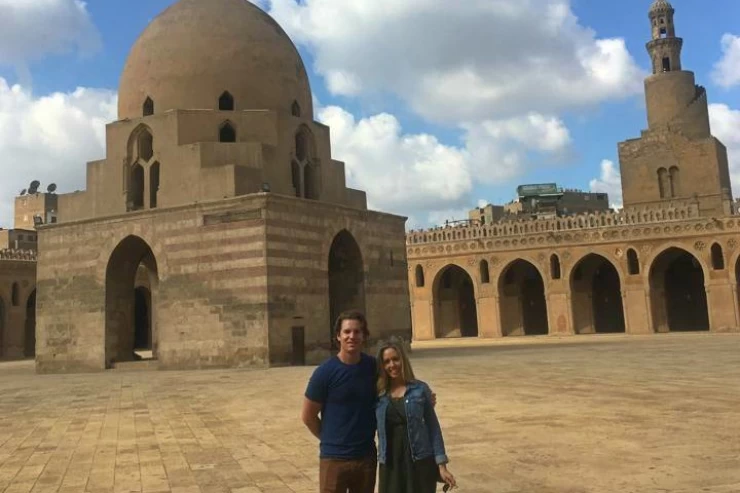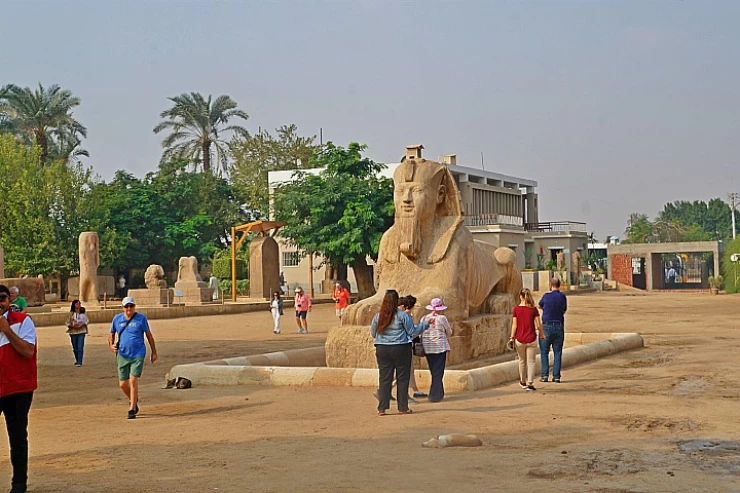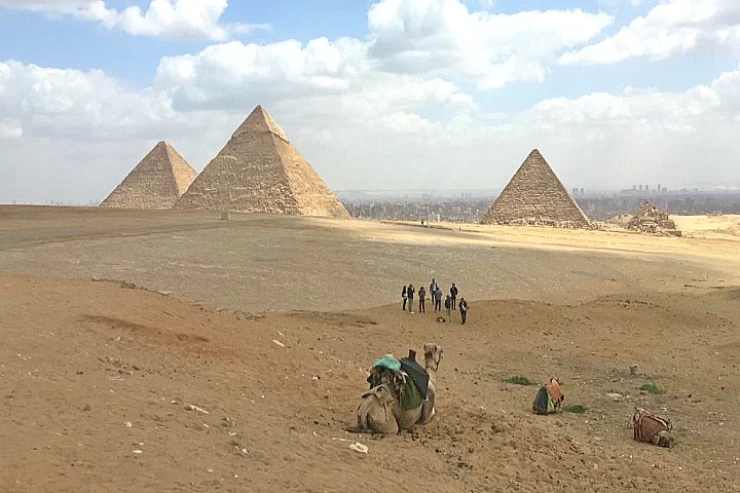Overview
开罗顶级旅游公司(Cairo Top Tours)为您提供了一个金盘,在这里您可以将现在的辉煌与过去的芳香融为一体,千万不要错过这个机会。我们的目的地是吉萨金字塔和大埃及博物馆,在这里,巨大的雕像和神庙墙壁诉说着历史。
我们的第一站将是大埃及博物馆,这是一座现代文化建筑,展示了图坦卡蒙国王的宏伟宝藏,并收藏了数百件独一无二的物品,其环境将现代技术与古代历史的精髓融为一体。
您有机会参观大埃及博物馆。在联合国教科文组织(UNESCO)和国际建筑师联合会(International Union of Architects)的支持下,埃及政府于 2002 年宣布将在俯瞰不朽的吉萨金字塔的黄金地段建造大埃及博物馆。博物馆的设计理念是,从三座金字塔顶端流泻而下的太阳光组合在一起,形成一个圆锥体,这就是大埃及博物馆。
吉萨金字塔是埃及最著名的考古遗址之一,包括第四王朝国王胡夫、他的儿子卡夫雷和孙子曼考拉的金字塔,以及著名的狮身人面像。每个国王的金字塔都有一组金字塔,每个国王的金字塔都包含一组金字塔,包括王后的金字塔、一个山谷神庙,从山谷神庙有一条小路通向一个被称为葬礼神庙的上层神庙,还有一个小金字塔,据说是国王的神学金字塔。 祭司们在这些庙宇中为去世的国王举行葬礼和安葬仪式。该地区以前有胡夫的船,被称为太阳船,最近在大埃及博物馆开放时被移到了那里,但该地区仍然保留着这些船的水井。最后,这里还有用于埋葬政要和王室成员的墓塔。
开罗顶级旅游公司(Cairo Top Tours)为您提供了一个金盘,在这里您可以将现在的辉煌与过去的芳香融为一体,千万不要错过这个机会。我们的目的地是吉萨金字塔和大埃及博物馆,在这里,巨大的雕像和神庙墙壁诉说着历史。
我们的第一站将是大埃及博物馆,这是一座现代文化建筑,展示了图坦卡蒙国王的宏伟宝藏,并收藏了数百件独一无二的物品,其环境将现代技术与古代历史的精髓融为一体。
您有机会参观大埃及博物馆。在联合国教科文组织(UNESCO)和国际建筑师联合会(International Union of Architects)的支持下,埃及政府于 2002 年宣布将在俯瞰不朽的吉萨金字塔的黄金地段建造大埃及博物馆。博物馆的设计理念是,从三座金字塔顶端流泻而下的太阳光组合在一起,形成一个圆锥体,这就是大埃及博物馆。
吉萨金字塔是埃及最著名的考古遗址之一,包括第四王朝国王胡夫、他的儿子卡夫雷和孙子曼考拉的金字塔,以及著名的狮身人面像。每个国王的金字塔都有一组金字塔,每个国王的金字塔都包含一组金字塔,包括王后的金字塔、一个山谷神庙,从山谷神庙有一条小路通向一个被称为葬礼神庙的上层神庙,还有一个小金字塔,据说是国王的神学金字塔。 祭司们在这些庙宇中为去世的国王举行葬礼和安葬仪式。该地区以前有胡夫的船,被称为太阳船,最近在大埃及博物馆开放时被移到了那里,但该地区仍然保留着这些船的水井。最后,这里还有用于埋葬政要和王室成员的墓塔。
Inclusion
- 开罗顶级旅游公司提供开罗旅游期间往返酒店的接送服务。
- 私人空调车。
- 从开罗出发参观大埃及博物馆期间的英语导游。
- 上述所有景点的门票。
- 在开罗当地优质餐厅享用美味午餐。
- 开罗一日游期间车上免费提供一瓶水。
- 开罗购物游
- 开罗之旅的全部税费和服务费。
Exclusion
- 埃及一日游》中未提及的任何内容 团费不含小费。
- 用餐期间的饮料。
- 斋月期间,旅游景点下午 3:00 关闭,因此旅游团通常提前一小时开始。
- 价格在埃及圣诞节和新年游或埃及复活节游期间有效。
Itinerary
开罗顶级旅游公司(Cairo Top Tours)的一名专业导游将于上午 9:00 在您位于开罗或吉萨的酒店等候您,带您乘坐私人空调车,开始一天的开罗之旅。
在激动人心的一天开始时,我们将前往大埃及博物馆,它是世界上最大的古物博物馆,每年可容纳 500 万游客。除了商业和娱乐服务建筑外,还将建造一个修复中心和一个博物馆花园,种植古埃及人已经熟知的树木。埃及已经发起了一场为该项目筹资的运动,日本的日本国际协力事业团将提供软贷款。博物馆将收藏法老、希腊和罗马时代的 10 万多件文物,这将极大地促进埃及旅游业的发展。
在开罗附近的一家餐馆享用美味的午餐后,我们将踏上前往吉萨金字塔的另一段独特旅程。吉萨是埃及最著名的考古遗址之一,这里有胡夫、他的儿子卡夫雷和孙子门考尔的金字塔,以及众所周知的狮身人面像。每个国王的金字塔都有一个金字塔群,如王后金字塔、一个小金字塔(据说是国王的神学金字塔)和一个山谷神庙,从山谷神庙有一条小路通向一个被称为殡葬神庙的上层神庙。在这些神庙中,祭司们为国王举行葬礼和安葬仪式。该地区还保留着胡夫船(又称太阳船)的水井,这些船以前曾存放在这里,但最近被搬迁到了新开放的大埃及博物馆。最后但并非最不重要的是,该地区还有用于安葬王室成员和政要的乳塔。
之后,您将乘车返回酒店。
含餐 午餐
Price
| Number of Persons | Prices |
|---|---|
| 1 Person | $170 Per Person |
| 2 - 3 Persons | $130 Per Person |
| 4 - 6 Persons | $110 Per Person |
| 7 - 10 Persons | $95 Per Person |
Start from : $95
Check Availability
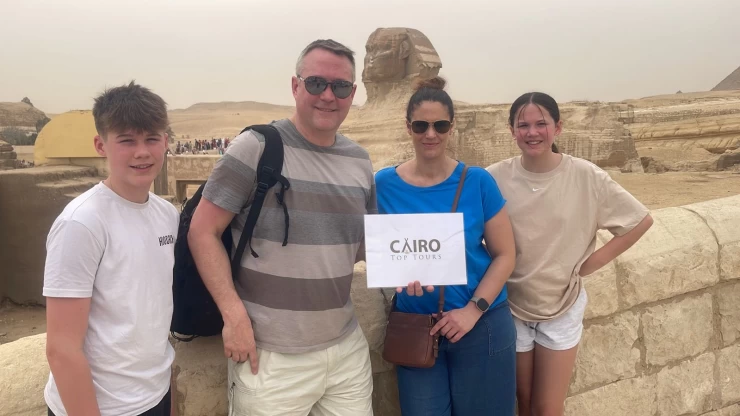
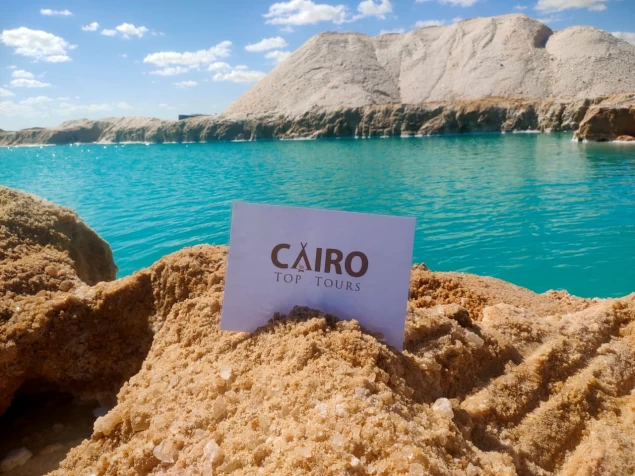
You Also May Like
Looking for something different? check out our related tour now, or simply contact us to tailor made your Egypt tour
吉萨金字塔与埃及博物馆开罗之旅
如果你想访问埃及,开罗是你理想的探索目的地。通过你参观埃及博物馆和吉萨金字塔,可以看到古埃及人在建筑艺术方面的神奇技艺。
埃及博物馆、科普特古城和伊斯兰开罗之旅
探索伊斯兰开罗宏伟的清真寺,感受开罗老城的历史魅力。深入了解科普特开罗的丰富遗产,这里有著名的地标性建筑和教堂,圣家族曾在此栖息,并拥有独特的圣像。此外,千万不要错过参观开罗埃及博物馆(Egyptian Museum)的机会,那里的展品令人叹为观止。
开罗吉萨金字塔、萨卡拉和孟菲斯一日游
在令人叹为观止的旅程中,参观闻名遐迩的吉萨金字塔,感叹埃及法老的伟大。在开罗之旅中,您可以探索这座历史悠久的埃及首都,这里到处都是金字塔和古墓,您还可以了解它的秘密。
开罗中途停留转机之旅
哈里里汗是一个露天市场,是了解当代埃及丰富的风俗和文化的窗口。在这里,您可以结识当地的手工艺人,为独一无二的纪念品讨价还价,还可以尽情享受这里弥漫的香料和芳香。
埃及之旅和中东评论
从我们的社交媒体账户、Trip Advisor 和 YouTube 视频中可以看到,埃及一日游(Egypt Tours)获得了许多客户的积极反馈,他们非常喜欢我们的低价埃及游,因为我们的专家会陪同他们游览埃及的每一个地方,向他们展示埃及和圣地游期间参观的每个景点的历史。您可以从我们的社交媒体账户、Trip Advisor 和 YouTube 视频中看到,埃及一日游(Egypt Day Tour)获得了很多客户的积极反馈,他们都非常喜欢我们的低价埃及游,因为我们的专家会陪同他们游览埃及和圣地的每一个地方,向他们展示每个景点的历史。
Egypt is an important country with many cool places to visit. If you want to see all the best things like the Grand Egyptian Museum and Giza Pyramids, it's smart to take a guided day tour. This way, you won't miss any of the awesome stuff that makes this country so interesting.
The cost of a typical daily tour in Cairo can vary widely depending on several factors, including the type of tour, the duration, the number of attractions visited, and the level of customization. Here are some general guidelines to give you an idea of what to expect:
Group Tours: Group tours in Cairo are often more budget-friendly, with prices ranging from $50 to $100 or more per person for a full-day tour. The cost may include transportation, entrance fees to attractions, and the services of a guide. Group tours are a cost-effective way to explore popular sites like the Giza Pyramids and the Egyptian Museum.
Private Tours: Private tours offer more flexibility and personalization but tend to be pricier. Prices for private full-day tours can range from $100 to $300 or more per person, depending on the itinerary and the level of luxury. These tours often include a private guide, transportation, and customized experiences.
Specialized Tours: If you're interested in specialized tours such as culinary tours, photography tours, or adventure tours (e.g., hot air balloon rides in Luxor), the cost can vary widely based on the type of experience and the duration. These tours may have additional fees.
Half-Day Tours: Half-day tours are typically more affordable than full-day tours. Prices can range from $20 to $80 or more per person, depending on the itinerary and inclusions.
Entrance Fees: Keep in mind that entrance fees to specific attractions may not always be included in the tour price. You may need to budget separately for entrance fees, which can vary from a few dollars to around $20 or more per attraction.
Add-ons: Some tours offer optional add-ons or experiences that come at an additional cost. For example, a Nile River cruise or a visit to a sound and light show might have an extra fee.
Seasonal Variations: Tour prices can fluctuate based on the season. Peak tourist seasons (e.g., winter and early spring) may see higher prices than off-peak times.
Giza, located near Cairo in Egypt, is renowned for its historical and archaeological landmarks, primarily associated with ancient Egyptian civilization. Here are the must-visit historical landmarks in Giza:
The Pyramids of Giza: These iconic pyramids are among the most famous historical landmarks in the world. The Giza Plateau houses three main pyramids: the Great Pyramid of Khufu (Cheops), the Pyramid of Khafre, and the Pyramid of Menkaure. They are symbols of ancient Egypt's architectural and engineering prowess.
The Great Sphinx of Giza: Adjacent to the pyramids, the Great Sphinx is a colossal statue with the body of a lion and the head of a pharaoh, believed to represent Pharaoh Khafre. It is one of the world's largest and oldest statues.
Solar Boat Museum: Located near the Great Pyramid, this museum houses a reconstructed ancient Egyptian solar boat, which was buried near the pyramids and is associated with Pharaoh Khufu. The boat's purpose was to transport the pharaoh's soul to the afterlife.
Sound and Light Show: The Giza Plateau offers nighttime sound and light shows that illuminate the pyramids and Sphinx while narrating the history and legends of ancient Egypt.
Pyramid of Djoser (Step Pyramid): Located in Saqqara, just south of Giza, this pyramid is one of the earliest monumental stone structures and a precursor to the Giza pyramids.
Saqqara Necropolis: This vast archaeological site is home to numerous tombs, mastabas, and pyramids, including the Pyramid of Teti and the Tomb of Mereruka.
Giza Solar Boat Museum: This museum near the Pyramid of Khufu features a reconstructed ancient Egyptian solar boat that was originally buried near the pyramids.
Ancient Egyptian Tombs: Explore the intricate tombs, hieroglyphics, and art at various locations on the Giza Plateau, including the Valley Temple and tombs associated with the pyramids.
Panoramic Viewpoints: Some locations around Giza provide panoramic views of the pyramids and the Cairo skyline, making them excellent spots for photography and appreciation of the landscape.
Old Giza Market: Explore the local market in Old Giza for souvenirs, traditional Egyptian products, and local cuisine.
Restaurants with a View: There are several restaurants and cafes in Giza that offer stunning views of the pyramids while enjoying a meal or refreshments.
Hot Air Balloon Rides: Some tour operators offer hot air balloon rides over the Giza Plateau, providing a breathtaking aerial perspective of the pyramids and surrounding areas.
The Grand Egyptian Museum (GEM), also known as the Giza Museum, is a massive museum complex that is located near the Giza Pyramids in Cairo, Egypt. It is one of the most ambitious museum projects in the world and has been designed to house Egypt's most extensive collection of ancient Egyptian artifacts, including the treasures of Tutankhamun. Here is an overview of the history of the Grand Egyptian Museum:
Origins and Concepts:
The idea for the Grand Egyptian Museum was conceived in the early 1990s, when it was recognized that the existing Egyptian Museum in Tahrir Square was insufficient to accommodate and properly showcase Egypt's vast archaeological heritage.
The new museum was designed to serve as a world-class facility that could house and display Egypt's most significant historical treasures.
Design and Construction:
In 2002, an international design competition was held to select the architectural design for the museum. The winning design was submitted by the architectural firm Heneghan Peng Architects.
Construction work began in 2002, and the museum complex was built in close proximity to the Giza Pyramids, making it part of the historical and archaeological landscape of ancient Egypt.
The museum's design takes inspiration from ancient Egyptian architectural elements, including the pyramids, and incorporates modern sustainable design features.
Collections and Artifacts:
The Grand Egyptian Museum was conceived to house an extensive collection of artifacts, many of which had been stored in warehouses or displayed in the existing museum. The most notable collection is that of King Tutankhamun.
Tutankhamun Galleries:
The museum has dedicated a significant portion of its space to the King Tutankhamun galleries. These galleries are designed to provide a comprehensive and immersive experience of the young pharaoh's tomb and the treasures it contained.
Historical Artifacts:
The museum's collections encompass a wide range of artifacts from various periods of ancient Egyptian history, including statues, jewelry, pottery, and more.
Official Opening:
The Grand Egyptian Museum officially opened its doors to the public on March 7, 2021, with a partial display of its collection. It was inaugurated in an event attended by Egyptian and international dignitaries.
Ongoing Development:
The museum is planned to be developed in phases, with additional galleries and features opening in the future.
One of the most anticipated phases will be the complete installation and display of the artifacts from King Tutankhamun's tomb.
Genieh, L.E, or Pound is the Egyptian money, which is divisible into 100 piasters (PT). Notes are available in denominations of E£100, 50, 20, 10, 5, 1, 50, and 25 piasters. Coin denominations include 20, 10, and 5 piasters. Egypt has had 200 Pound notes in circulation since 2007. The fact that each note is written in two languages, Arabic and English, is a plus.
Tipping is a common practice in Egypt. It's customary to tip tour guides, drivers, and service staff. The amount may vary, but it's a way to show appreciation for good service.
The best months for tourists to visit Egypt, considering crowd sizes and weather, are typically during the shoulder seasons and cooler months:
- Spring (March to May): This period offers pleasant weather with moderate temperatures, making it an ideal time for sightseeing. Crowds are generally smaller than during the peak season.
- Fall (September to November): Similar to spring, the weather is comfortable, and tourist numbers are relatively lower. It's a good time to explore without the intense heat and large crowds.
- Winter (December to February): Winter can be popular among tourists due to cooler temperatures, especially in northern Egypt. However, this period may attract more visitors, especially during the holiday season.
- Avoiding Peak Season (June to August): Summer in Egypt can be extremely hot, especially in southern areas like Luxor and Aswan. It's the peak tourist season due to school vacations, but the heat can be challenging for sightseeing.
It's recommended to wear comfortable clothing and shoes suitable for walking, as you'll be exploring archaeological sites. Sunscreen, a hat, and plenty of water are also advisable, especially in the hot Egyptian climate.
A Grand Egyptian Museum and Giza Pyramids Tour is a guided excursion that combines visits to two of the most significant archaeological sites in Egypt: the Grand Egyptian Museum and the Giza Pyramids. The Grand Egyptian Museum, located near the Giza Plateau, is a state-of-the-art museum that showcases Egypt's ancient treasures, while the Giza Pyramids are iconic structures that date back to the time of the pharaohs.


Cairo Top Tours Partners
Check out our partners

